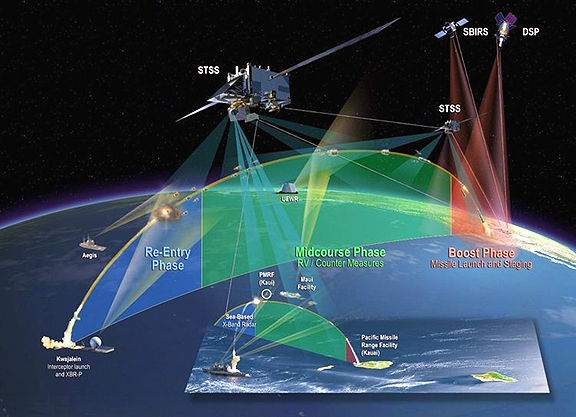
The Space Tracking and Surveillance System (STSS) satellites built by Northrop Grumman Corporation (NYSE: NOC) for the U.S. Missile Defense Agency (MDA) have far surpassed their four-year, on-orbit design life, completing a tenth year of space operations.

Artist rendition of STSS satellites helping to destroy incoming long-range warheads as part of a test in the Pacific test range.
Image is courtesy of Northrop Grumman.
Continuing to operate today, the STSS satellites provide critical support for missile and national defense. Two STSS satellites were launched into LEO in 2009 and proved the operational value of space-based, precision, mid-course, ballistic missile tracking. STSS has tracked ballistic missiles through all phases of flight and in 2013 demonstrated the “launch on remote” capability, which significantly expands the defended area of a U.S. Navy Aegis cruiser.
Bob Mehltretter, VP, Military and Civil space, Northrop Grumman, stated that STSS proved that space-based assets could significantly improve the nation’s missile defense capability and paved the way for future systems,. Being able to track missiles from LEO allows threats to be engaged earlier in the process using existing interceptors. The company is leveraging all the experience the firm gained from the legacy OPIR [Overhead Persistent Infrared] systems — STSS, DSP [Defense Support Program], and SBIRS [Space Based Infrared System] — to develop the nation’s future OPIR programs.

